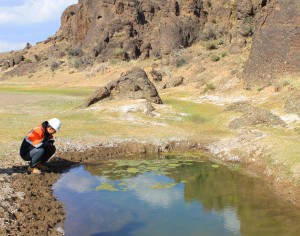2030 WRG Develops Mine Water Management Program in Mongolia
Mongolia Country Update

On the basis of a recently concluded hydro-economic assessment of the mining sector in Mongolia, 2030 WRG is developing a regional mining program to incentivize better water management in Mongolia’s mining industry. The hydro-economic analysis focused on water demand reduction and water supply augmentation options for the Tavan Tolgoi and Shivee Ovoo regions of Mongolia. It highlighted surface water transfers as more expensive solutions compared with demand-side management options, and in some cases, groundwater use.
Through a series of awareness building workshops on the analysis, 2030 WRG has built capacity of government, private sector and civil society stakeholders on cost-benefit tools for water decision-making and effective water governance. Stakeholders recognized the value of the analysis for prioritization of technical solutions.
Mark Newby, Environmental Manager, Oyu Tolgoi, one of the biggest mining sites in the country, termed the analysis as a “paradigm shift” in Mongolian stakeholders’ understanding of possible water solutions.
Mongolia’s water demand is expected to exceed supply capacity before the year 2021 (PwC-2030 Water Resources Group Analysis, 2014). The South Gobi mining cluster is already experiencing water stress, with the mining industry (at 12.7% of current demand) poised to emerge as the biggest water user in the future.
Eight Mongolian mining companies, part of the IFC Mining Roundtable supported by 2030 WRG, have recently adopted a Voluntary Code of Practice for better water management. Read more about this Code of Practice here.
2030 WRG is currently engaging with mining companies, government stakeholders, and civil society organizations to design multi-stakeholder solutions to the challenge of the mine-water nexus. Such solutions will include a combine of regulatory, institutional, and technical changes to optimize water efficiency at mine operations and minimize wastewater.
